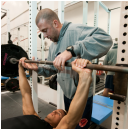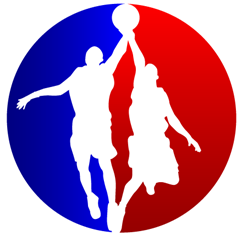by Sam Reffsin CSCS, USAW
Although there are many attributing factors to the mastering of an Olympic Lift, the main focus of this article centers on the Triple Extension factor.
As strength and conditioning coaches, we strive to address the main objective with Olympic movements and to teach our athletes how to achieve triple extension (ankles, knees and hips). We cannot let our athletes develop poor extension or to acquire flawed habits when working with the Olympic lifts. For example, while we should all encourage our athletes to “move the bar fast” when performing these movements, we can’t fall into the trap of being distracted by the bar speed and ignoring any extension.
Over the course of the past few months I have taken a new approach in my progressions and have taught my athletes the proper way to execute these complex lifts by exercising a stronger emphasis on the “scoop” technique.
The following videos should provide an accurate depiction of the correct and incorrect Olympic lift movements.
Video of Zero Extension
I am clearly achieving zero extension at the ankles, knees and hips. I am developing poor motor patterns in this video. When I see an athlete doing this I ask them if this is how they jump or tackle in a game and I make sure they understand the importance of triple extension in order to get that carry over effect during competition.
I put together a progression that has worked with my athletes. I’ll leave the amount of time in each phase up to your coaching judgments.
Phase One
Once your athlete is proficient in the conventional deadlift, he/she will be prepared to learn the power shrug.
Power Shrug Video
You’ll notice once I clear my knees in my “first pull”, I violently extend my hips by banging the bar off my mid thighs. This is called “the scoop”. If there is one idea I would like you to take away from this article, it’s understanding how vital the scoop is during Olympic movements. I believe a violent scoop is the only true way to achieve consistent extension at the hips. Athletes understand how to extend their ankles and knees quick enough, but without teaching a proper scoop, it is hard to expect them to fully extend their hips through every Olympic movement. Initially, athletes will slow down right when the bar comes in contact with their mid thighs because they are timid of the pain, and it might hurt at first but they will get used to it and eventually scoop hard and violently. At the peak of the scoop, I encourage my athletes to squeeze their glutes together as if they were holding a coin between their cheeks for a split second. I also teach my athletes to keep their toes in contact with the ground at all times for the simple reason that once you leave the ground, you lose the ability to generate force. Once my athletes have mastered the scoop on the power shrug I then move them onto a power high pull.
Phase Two
Power High Pull Video
Good hard scoop and then pull up. Once they master the power high pull, I then get into power snatch progressions. I choose power snatch instead of power clean because you must emphasize the scoop for the power snatch more so than a power clean. Don’t get me wrong, you can scoop hard and have a beautiful power clean, but I think athletes tend to cheat the power clean more so than the power snatch.
Phase Three
I’ll bring them back to basics on a power shrug using a snatch grip. This will get them familiar with the wider grip.
Power Shrug Snatch Grip Video
Phase Four
Once they get some experience with that snatch grip I will then bring them into a power snatch. At first it will look and feel awkward, which is why I use lighter weight with them for the first 3-5 weeks to ensure safety, but if they still apply that violent scoop than they should get right into it with ease.
Power Snatch Video
I cannot stress enough how important it is to master the scoop while training athletes in the art of Olympic Lifts. Without a hard and violent scoop, the athlete will never be able to generate the maximal force they are capable of.
If anyone has any further thoughts, or a more successful way of getting triple extension, please do not hesitate to contact me via e-mail at sreffsin@gmail.com.
Sam is currently the Men’s Basketball and Women’s Softball Strength & Conditioning Coach at Webber International University located in Babson Park, FL. He can be reached at sreffsin@gmail.com.





